#Digitalstorytelling
Explore tagged Tumblr posts
Text

Did you know? In 2024, a staggering 84% of respondents reported leveraging #ArtificialIntelligence (AI) in some part of the #video production process! 🤖🎬
From editing to scriptwriting and beyond, #AI is reshaping the way stories are told. Are you using AI in your creative workflow yet? Let us know: 👉🌐 https://www.pranathiss.com 👉📧 [email protected] 👉📲 +1 732 333 3037
#VideoProduction#ArtificialIntelligence#ContentCreation#FutureOfVideo#CreativeTech#Innovation#DigitalStorytelling#Automation#avatar
8 notes
·
View notes
Text
Central Analysis Chamber
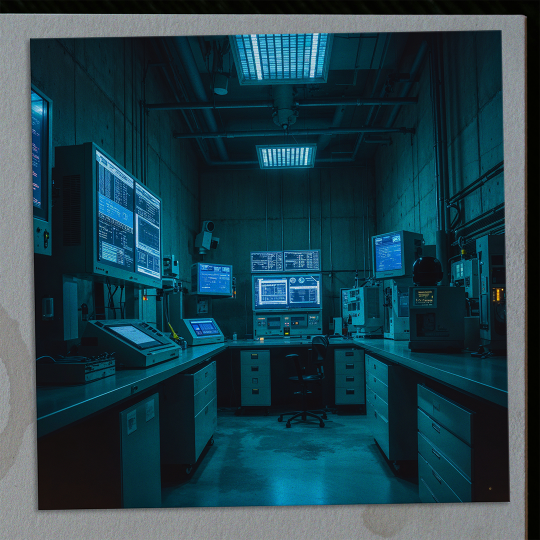
📊 Central Analysis Chamber operates at 99.4% efficiency during anomalous fluctuation events. Reality stabilization field extends up to 2.7km.
#SCP#AnalogHorror#ThisIsNotAGame#BlackSwanLabs#CosmicHorror#TransmediaStorytelling#horror#Worldbuilding#ARG#DigitalStorytelling
2 notes
·
View notes
Text

All that you see https://linktr.ee/farcasterart
All that you touch All that you see All that you taste All you feel Pink Floyd
#norway#firefly#aiartists#norge#digitalart#midjourney#digitalartwork#aiart#imagination#art#artofinstagram#digitalillustration#posterart#maleri#fineart#generativeart#artiumvisuals#stablediffusion#digitalstorytelling#artdaily#creativity#arttherapy#aiartdaily#innerworlds#beautifulart#storytelling#artcommunity#prompt#dalle#ia
31 notes
·
View notes
Photo
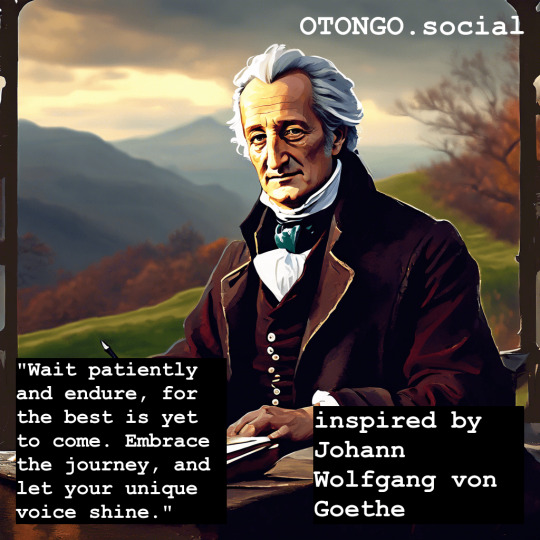
Johann Wolfgang von Goethe was a German writer, statesman, and naturalist known for his literary contributions and profound ideas on art and science. His works explore the depths of human emotion and the beauty of nature.. Get motivated to create content with www.OTONGO.social -> waitlist open.
#ContentCreation#OTONGOsocial#Authenticity#VoiceAndVision#SocialMediaStrategies#HumanTouch#OriginalContent#PreserveYourBrand#QualityOverQuantity#JoinTheWaitlist#CreativityUnleashed#DigitalStorytelling#Photography#AuthenticVoices#VisualContent#SocialMediaAuthenticity#VoiceRecording#EngageYourAudience#InnovationInContent#FutureOfContent
2 notes
·
View notes
Text
❤️ Dot to Dot
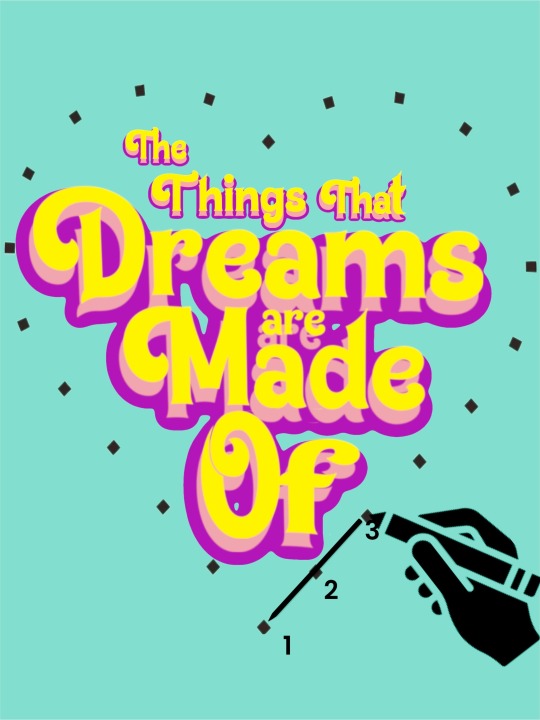
There are some parallels between the acts of completing a dot-to-dot drawing, following a pre-defined diagram, and living a conventional life outlined by societal or cultural expectations.
In a dot-to-dot drawing or when following a diagram, there's a set trajectory. The outcome is pre-determined; all you need to do is follow the given steps to connect the dots or match the diagram. It is a form of structure and guidance which can sometimes lead to a predictable or even an exquisite creation.
Living a conventional life often bears similar hallmarks. Society sets some 'dots' or conventional milestones for us, such as going to school, getting a job, getting married, having children, and then retiring. It provides a safety net of guidelines and societal understandings, fostering a sense of belonging and normalcy.
However, the notion of creativity, individuality, and autonomy can face restrictions in both scenarios. Just as a dot-to-dot drawing leaves little room for one to exercise creativity beyond those dots, living a conventional life may limit a person's ability to explore unique paths or express individuality, particularly when these expressions conflict with societal norms.
Yet, it's essential to remember that life, unlike a dot-to-dot drawing, isn't rigid. One has the freedom to create their own 'dots', to define their unique path, and live their authentically unconventional life. It leverages the unpredictability and chaos of life to create something truly unique and personal.
Ultimately, the choice of whether to follow the dots or create our path reflects the tension between security and autonomy, conformity and creativity, predictability and uncertainty.
#NewBlogAlert#Tumblr#LinkInBio#BloggerLife#ContentCreator#DigitalStorytelling#BlogLaunch#WritersOfinstagram#WatchThisSpace#JoinTheJourney#*©#blog#journalism#design#copywriting#advertising#fashion#Music#london#Style#graphic design ~#art#musicculture#short form#Culture#Critic#analysis#contentwriter#tumblr#aesthetic
2 notes
·
View notes
Video
tumblr
This is my Oral Storytelling Project. The Prompt was to present a storytelling video to the class. In my project I chose to create a light-hearted supernatural story about a transfer student with horns. The process I took to create this project mostly me trying to think of what to make as the story had to be long enough and had to have a solid conclusion. First I imagined the concept of the story. The idea of something supernatural at school like a folktale legend or curse. Then I thought of a way to tell it. I originally wanted to make an animatic of the story but I realized editing took too much time already so instead I put more effort into sound effects and making the audio do most of the storytelling. Then I drew a concept image for it to help provide a visual in the final product.
5 notes
·
View notes
Text
Corporate Content 2.0: Make Your Audience the Main Hero
Beyond Self-Promotion: Creating Corporate Content People Actually Want to Read The moment you see that LinkedIn notification, you know what’s coming. Another “🎉 Exciting news!” post about someone’s office expansion, award, or funding round. Your thumb hovers over the screen, the familiar eye twitch returns, and you scroll past without a second thought. Why? Because that update wasn’t for you—it…
#AudienceFirst#ContentRevolution#CorporateStorytelling#DigitalMarketing#DigitalStorytelling#EngagementMarketing
0 notes
Text





Last Tuesday night, Taylor Collins decided housing rules didn’t apply to her. What started as a ‘private chat’ with RA Jordan Blake spiraled into threats, leaked secrets, and a showdown that left everyone questioning—who’s really in control here?
#DarkAcademia#CampusDrama#DormLife#RAsOfInstagram#CollegeThriller#PowerStruggle#MidJourneyArt#DigitalStorytelling#FilmNoirVibes#SecretsAndLies
1 note
·
View note
Text
youtube
#digitaldetox#informationoverload#collectiveimagination#digitalstorytelling#narrativetheory#bookbite#Youtube
0 notes
Text
Processing Center
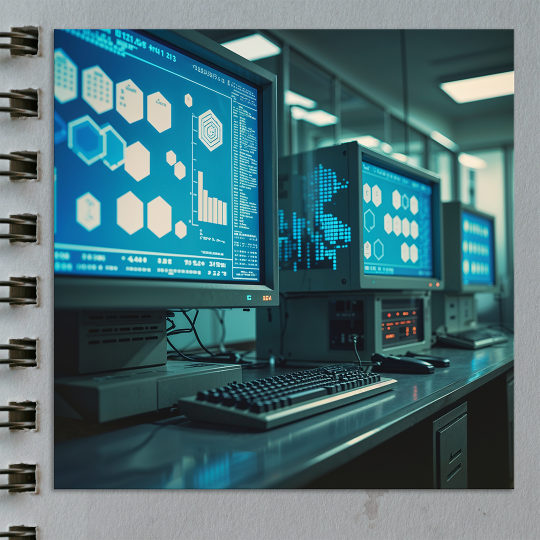
📡 OMNICOGNATE processing center monitors 347 high-priority anomalies simultaneously. Reality Coefficient fluctuations detected with 99.7% accuracy.
#SCPFoundation#DigitalStorytelling#unfiction#BlackSwanLabs#AnomalyMonitoring#horror#TransmediaStorytelling#Lovecraftian#ThisIsNotAGame#SciFiHorror
0 notes
Text

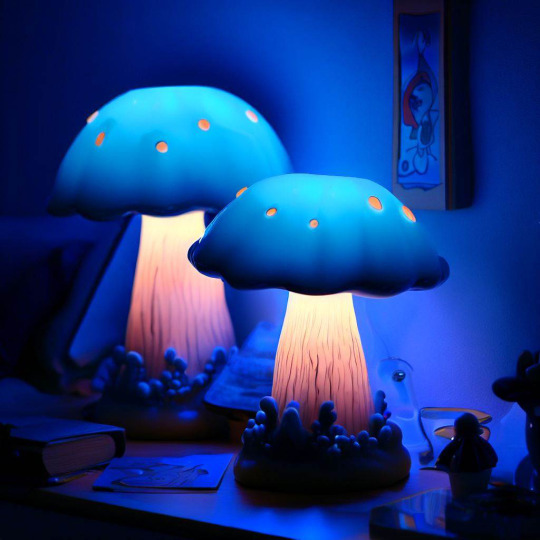


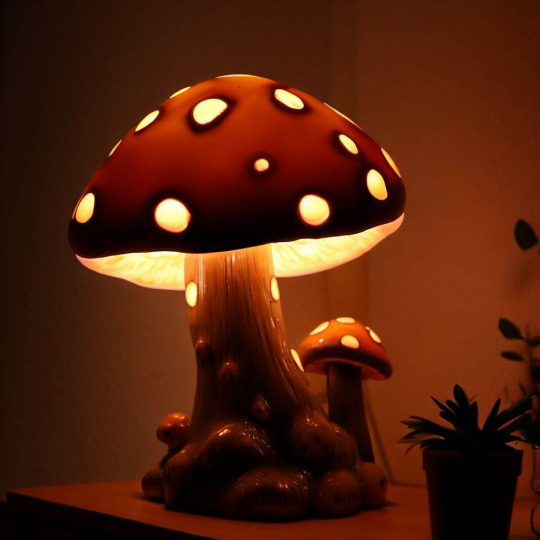

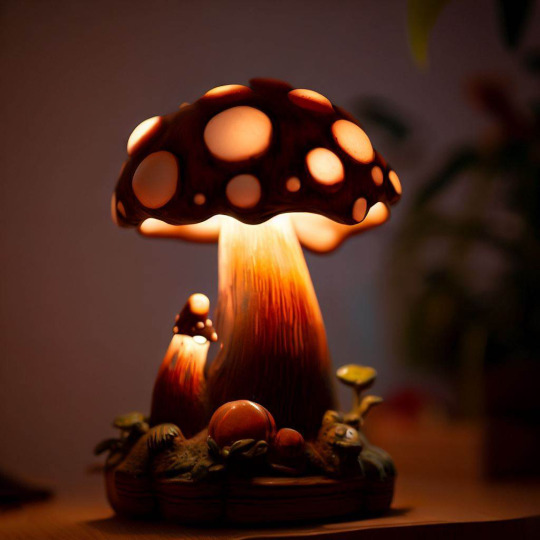
https://linktr.ee/farcasterart
mushroom light
My garden-plot I have not kept; Faded and all-forsaken,I weep as I have never wept:Oh it was summer when I slept, It's winter now I waken.by Christina Rossetti
#norway#posterart#maleri#fineart#adventure#norge#digitalart#midjourney#digitalartwork#aiart#imagination#art#artofinstagram#digitalillustration#instaart#dalle#ia#adobefirefly#digitalstorytelling#artdaily#creativity#positivevibes#unleashcreativity#arttherapy#artforlife#innerworlds#beautifulart#storytelling#storying#artcommunity
9 notes
·
View notes
Text
Content Creation Tools of Digital Memory Traces
Content Creation Tools of Digital Memory Traces - Two main technologies are available to create content: text and images. The former allows for complexity in terms of interactivity, logic, and also storage size within the e-learning software developed during these two years. This complexity translates into large development time, requiring a team of instructional designers and developers for content results. The second means, i.e., images, is what most online resources use, and it enables a significant level of productivity—an important feature in an environment where time for content creation is often scarce. Digital Memory Traces offer you the opportunity to have a brand new educational resource at your disposal, or an archive that meets your teaching needs, by focusing on the production of content and offering you the platform that makes for better access and exchange of good practices and ideas that could be applicable in distinct regions. The training provided in this manual will equip you with the necessary skills to produce and share digital content.

Visual Elements
Images of various media are utilized in the website's header and are an integral part of the website. To help show the potential of community-contributed tags and transcriptions, a series of images depict newspaper articles containing instances of over-the-top reactions. These images are intended to be both amusing and related to news articles while also depicting mundane activities. We have also utilized an information map that visually depicts articles on a given article page as nodes. Node shape is also part of the mapping. Whether the article appears on the front or inside pages affects the size of the nodes, and the associated mapping is displayed below the map. Additionally, a set of visual elements is located in the article pages. To separate the article prose and photographs with the resources necessary to illustrate a given article, the photographs are placed on their own lines. This mimics the structure of a printed newspaper while also creating a link for users interested in seeing original images at higher resolutions.

Audio Integration
Our second area of integration is audio integration. As mentioned earlier, the system records both audio and paper input during a session, i.e., it records conversations, lectures, and various sounds in addition to the traces of the manipulations. For lectures and conversations, hearing the words is often critical; thus, we designed the interface to allow viewing a session while hearing the recorded audio. There are three tiers of audio integration support: 1) For any session, we do our best to capture and display associated audio, which can be linearly accessed; 2) For session viewing, as the audio is displayed, the interface enables one-click access to associated handwriting with the corresponding word highlighted; 3) Time-synced to replay while interacting with reconstructed content. For instance, given a trace of the original source and a file that gives the time each visual edit occurred, we created an editable website that generates a movie that exhibits how the source is modified, synchronized with any audio associated with the session.
Since all the paper input strokes are recorded, the system can continuously recreate original drawings with added edge enhancements. But these pen strokes can also be played as audio, much like an ink player or music box. In conjunction with the audio, the session can be visualized and associated written and oral words captured in real time. The ability to record and review the paper strokes as they were drawn, and with any related audio, is thus possible.
Textual Contributions
Digital Memory Traces: A Platform for Creation and Sharing "Hunting Memories" is a collaborative initiative where field botanists and computer scientists work together to design and utilize a platform for the creation and sharing of digital memory traces in the form of multimedia field guides that support collective memory. Field guides of plants, animals, and fungi are an essential tool for cooperative learning, field identification, documentation, and the sharing of experts’ and amateurs’ knowledge. All this can be supported by employing a specifically tailored platform for creating and sharing collection objects in the form of interactive dynamic multimedia field guides, using collaborative semantics, mechanisms, and freely available software tools. The resultant platform is designed for use during joint field excursions and open-ended community browsing. It employs extensions of traditional field guides in book and digital form, containing ready-to-use multimedia templates, added-value applications, and is integrated with publishing mechanisms with a special imprint policy designed to share ideas beyond the realm of the field excursion.
#ContentCreation#ContentCreationTools#DigitalMemory#DigitalTraces#CreativeProcess#VideoProduction#SocialMediaMarketing#ContentStrategist#OnlineContent#ContentThinking#DigitalStorytelling#CreativeTools#MemoryTraces#Multimedia#ContentCreators#VideoEditing#TechForContent#MediaProduction#DigitalInnovation
0 notes
Text
Post-Punk, Reggae, and the Evolution of East London's Music Scene
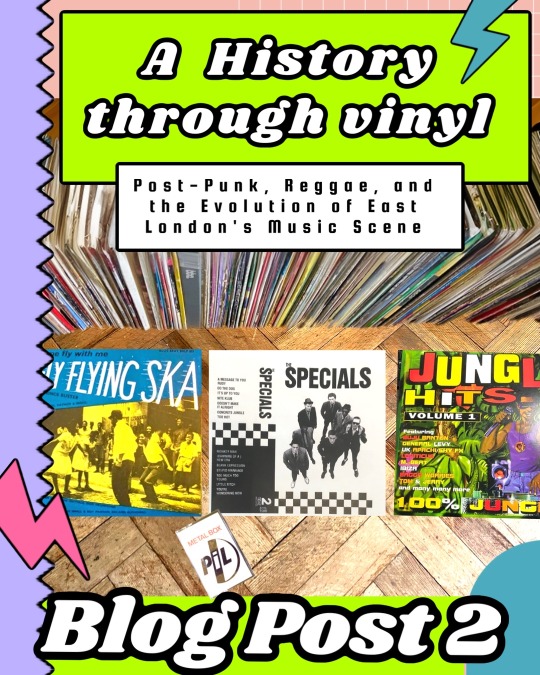
Introduction
The British music scene has a vibrant history of embracing and transforming genres from different cultures, particularly black music. From the Beatles' admiration for American rock 'n' roll in the 1960s to the rise of reggae music, the British have taken these influences and added their own innovative touch. However, it was with the emergence of reggae in Britain that an exciting and transformative journey began. This journey eventually paved the way for genres like rave, jungle, garage, and dubstep.
Moreover, East London played a central role in shaping this musical landscape. This essay aims to uncover the deep connection that East London has with dub and reggae music, as well as the influential East London artists who emerged and played a significant part in transforming British music.
Early days of Reggae in East London.
Reggae has been a part of East London's music scene since the 1960s, and we owe a great debt to the generations before us who not only created this music but also embraced it, making it cool to listen to. As a personal example, my father was part of the first-wave of skinheads and frequented reggae or 'Blues beat' clubs like the Four Ace's in Dalston during his formative years. The Four Ace's, established in 1966, the Wikipedia entry for the Four Ace’s states that ‘in the 1960s and 1970s, the club was one of the first venues to play black music in the United Kingdom and was credited with playing a significant "role in the evolution of reggae into dance music, from ska, to rocksteady, to dub, to lovers, to dancehall and the evolution of jungle.’
The experiences my father had during that time left a lasting impact on his musical taste, which included artists like John Holt and Bob Marley, as well as Tamela Motown Records and sophisticated 70s soul. These musical preferences were shared by many East Londoners during that era.
A Confluence of Influences: Post-Punk and Reggae
When punk arrived, my father's generation might have been considered too old for that scene. However, it was during the emergence of the second wave of British reggae enthusiasts that something truly groundbreaking occurred. This generation not only embraced punk music but also incorporated elements of reggae and punk into their own music. These individuals were visionaries who played integral roles in the music industry and the post-punk scene. Artists such as Jerry Dammers and Terry Hall with The Specials, John Lydon and Jah Wobble with Public Image Limited, Pauline Black and The Selector, Neenah Cherry with Rip Rig & Painic, Adrian Sherwood, The Pop Group, The Clash, The Slits, and even Madness, played a vital role in the cultural fusion of post-punk and reggae.
The connection between post-punk and reggae in the British music scene is a testament to the remarkable diversity that emerged during this period. They took reggae as a starting point and created their own unique punk versions or experimented with unconventional, abstract variations of the genre. The intertwining of post-punk and reggae is an undeniable connection that can be viewed as a breeding ground for the unique British diversity that would resurface and continue in genres like jungle and dubstep These genres can be seen as natural progressions of the groundwork laid by the reggae-inspired post-punk musicians.
It is important to acknowledge the pioneers of reggae and those who stayed true to its traditional roots. Reggae itself deserves immense praise, but this piece focuses on the diverse sounds it has inspired. Reggae did not necessarily require diversification, but it played a pivotal role in encouraging white British individuals to embrace diversity and undergo transformative experiences. Reggae was everywhere while I was growing up in Hackney - resonating from tower blocks, playing at parties of friends with West Indian Caribbean backgrounds, and streaming from radios & stereos of guys I worked with. During my early teens, there was a Dancehall reggae boom, with half of my friends into ‘Dancehall Ragga’ and the other half into either rave or Heavy Metal music. It was just the way things were back then.
The East London Connection: Jah Wobble.
The biggest noteworthy figure from East London who played a pivotal role in this transformation is Jah Wobble. Born John Joseph Wardle of Stepney Green, the bass guitarist and singer known as the original bass player in Public Image Ltd (PiL) in the late 1970s. Jah Wobble perfectly embodies the open-minded and diverse music approach ingrained in certain types of East London residents. He went on to pioneer a plethora of diversity in his music.
The Influence of Post-Punkers on Rave
Among the post-punk artists, it was the industrial music musicians who wholeheartedly embraced change. Hackney resident Genesis P.Orridge of Throbbing Gristle made influential contributions to acid house with his project 'Jack the Tab,' just as Richard H Kirk of Cabaret Voltaire did in the Sheffield scene and early Warp Records. They were not interested in remaining loyal to a single genre but instead chose to move with the current and embrace whatever manifested at the time. Artists like Jah Wobble, along with many likeminded individuals, were already exploring the realms of reggae, hip hop, and electronic music. The combination of these factors sparked an optimistic and forward-thinking attitude towards music, and the post-punk era cultivated a remarkably imaginative and inventive environment during the vibrant decades of the 80s and 90s, which proved to be an optimal period for artistic exploration and groundbreaking innovation.
Mutation, diversity and open-mindedness towards music all idea’s that would find home and be carried forward in Rave. Other influences added to the cultural blend, including the energetic beats of hip hop, house, and techno. As a result, the British Reggae-Rave version of this music emerged. Some of it had an electrifying party energy that gleefully crank-up the insanity level, with an emphasis on multiculturalism much similar to the British Ska movement of the late 70s. Then some of it would be dissonant and otherworldly like a mix of techno and more abstracted post-punk like Public Image Ltd. This thrilling evolution proved to be revolutionary, setting the stage for Jungle, Drum & Bass & Dubstep. This emerging genre of dance music would serve as a platform for even more numerous young individuals, many of who had little music training or equipment, to engage with music. Enabling them to flourish, thrive and capture the spotlight, which, in my opinion, truly epitomises the essence of punk. This indomitable spirit, reminiscent of both British Punks and Jamaican rebels, continued to exert its influence within the rave generation, as a real rebel connection.
Furthermore, when artists from East London who had primarily focused on reggae music began experimenting with abstracted reggae elements and rave-inspired tempos, as exemplified by the likes of 'Shut Up & Dance' and their 'Hackney Hardcore' projects, the rapid development of Jungle music was greatly accelerated.
Since then, East London has consistently been at the forefront of underground dance movements, particularly during the ascent of rave music in the UK. This is not by chance, as at that time, East London's vibrant music scene provided the perfect nurturing ground for experimentation and creativity to flourish. This collective effort resulted in a vibrant underground dance movement that East London has continued to lead ever since.
Conclusion
The journey from post-punk to rave exemplifies music's ability to transcend boundaries and spark creativity. The experimentation and melting pot of ideas in the post-punk era have had a lasting influence on future generations. The contributions of reggae-inspired post-punk musicians will remain a source of pride and inspiration, serving as a constant reminder of the limitless possibilities in both music and life.
In conclusion, the most significant impact of rave was its ability to bring people together and overcome differences. Rave culture was about breaking down divisions and embracing unity. The transition from reggae to rave, jungle, garage, and dubstep is a testament to the coming together of people from different cultures within these shores creating genres that celebrate the cultural mix in music. The enduring legacy of East London's music history reminds us of the importance of unity and transcending differences. The influence of these artists and the love for dub and reggae music in East London continues to shape not only the UK music scene, but also that of the world.
#NewBlogAlert#Tumblr#LinkInBio#BloggerLife#ContentCreator#DigitalStorytelling#BlogLaunch#WritersOfInstagram#WatchThisSpace#JoinTheJourney#*©#blog#journalism#design#copywriting#advertising#fashion#Music#london#Style#graphic design#art#musicculture#short form#Culture#Critic#analysis#contentwriter
3 notes
·
View notes
Text

🏛️ How AI Content Flows Helps Museums in Content Creation & Marketing
Museums preserve history, culture, and innovation—but bringing exhibits to life online requires strategic storytelling, consistent content, and audience engagement. Managing all of this while running educational programs and events can be overwhelming. AI Content Flows (ACF) simplifies content creation and marketing by offering museums a streamlined way to produce, optimize, and promote stories that matter.
How AI Content Flows Supports Museums:
Automated Exhibit Descriptions & Event Posts – Quickly generate engaging copy for new displays, tours, and cultural programs.
SEO-Optimized Content – Improve discoverability for museum websites, blog articles, and featured collections.
Social Media Storytelling – Create informative, accessible, and visually appealing captions that bring collections to a wider audience.
Audience Engagement Insights – Understand which stories drive visitor interest and refine messaging accordingly.
Consistent Cross-Platform Presence – Maintain unified messaging across social channels, blogs, and digital publications.
💡 From ancient artifacts to modern art exhibitions, AI Content Flows helps museums communicate their mission and collections with clarity, consistency, and creativity.
📢 Preserve the past, engage the present—start using AI Content Flows today!
🌐 Explore more at www.aicontentflows.tech
#MuseumMarketing#AIContentFlows#CulturalEngagement#DigitalStorytelling#ContentCreation#PublicEducation
0 notes
Text
HDMS033. The Art of the Soft Sell: Native Advertising for Comedy Careers
You’ve probably seen a native ad today without realizing it. That skincare article you clicked on from Vogue???? Sponsored by a serum brand!!!! That Spotify playlist that magically matched your mood and promoted a Netflix show???? Yep, that too!!!!
Unlike traditional ads that practically shout “HEY YOU! BUY THIS THING!”, native advertising blends in. It looks and feels like regular content���something you’d want to read or watch anyway—but behind the scenes, it’s doing the job of selling.
And here’s why that matters:
As comedians, creatives, and indie producers, we don’t always have the luxury of a massive advertising budget. But what we DOOOO have is the ability to tell stories, make people feel something, and create content that connects!!!! That is EXACTLYYY what native advertising is built on!!!
So the question becomes: How do we start creating content that doesn’t just entertain—but also quietly sells us, our shows, our podcasts, or our projects—without making people feel like they’re being sold to?????
This Harvard module (3.3.2 Native Ads) introduced native advertising as a way for brands to provide value before asking for anything in return. And that’s something every comedian can borrow. Because when you make people feel something first—laughter, insight, curiosity—they’re far more likely to remember you, follow you, or show up to your next gig.
Let’s talk about what native advertising actually is, why it works, and how we can use it to build comedy careers that grow without shouting. BORA, MULEKE!!!
I. What Native Advertising Actually Is (According to Harvard)
According to module 3.3.2, native advertising is different from traditional display ads in two major ways:
First, it’s designed to blend in with the content around it. It doesn’t look like an ad. It looks like a blog post, an article, a playlist, a story. It wears the same clothes as the platform it lives on.
Second, it exists to offer value first—entertainment, insight, aesthetic vibes, whatever makes it worth your time—before it tries to sell anything.
It’s the opposite of “Buy Now!” energy. It’s “Here’s something interesting—oh, by the way, we made it.”
Harvard gave three examples that made this hit home for me:
The Philippines Tourism Board partnered with the BBC’s travel site to publish a beautiful, immersive photo essay about the country—like a journal entry, not a sales pitch. At the very end, there was a quiet link to learn more.
Allbirds did a native piece on climate change and bird migration. It read like a well-researched, interactive article with visuals and slow color fades. The brand only came in when it made sense.
Netflix and Spotify teamed up to launch custom playlists blending Stranger Things tracks with each user’s top songs, complete with spooky visual effects. It wasn’t an ad. It was an experience that just happened to promote the new season.
That’s the secret: native ads don’t feel like ads. They feel like content you actually want to engage with.
And they work. According to Harvard, native ads are viewed over 50% more than regular display ads, and they get higher click-through rates because people aren’t tuning them out the way they do traditional ads.
But the goal of native advertising isn’t always a click or a purchase. Sometimes it’s just planting a seed—creating a halo effect around a brand. And that’s the part comedians can use!!!!!! You don’t always need to make a hard ask!!!! You just need to LEAVE AN IMPRESSION that makes people want to COME BACK FOR MORE!!!!
II. Why Native Ads Work (And Why They’re HELLA Tricky)
Native ads work because they feel like they belong. They speak the language of the platform they’re on. They’re not trying to disrupt—they’re trying to enhance.
That’s why people engage with them more. They don’t trigger that automatic “ugh, another ad” reaction. Instead, they feel like an article, a playlist, a visual story. And when people actually enjoy the content? They start to like the brand by association. That’s the halo effect.
But here’s the catch: they’re not easy to make, okay??? These bitches be tricky, as I'm coming to learn... But I take it it's part of the process, and just because it's a completely foreign concept to me (or to you) it doesn't mean it isn't worth the effort of learning it and, dare I say, making mistakes too!!! My dad always says that anything worth doing is worth doing poorly. That's how I'm beginning to feel about this "strategic" side of marketing.
So how do we create native ads as comedians???? How do we start??? Well, as far as creating a good native ad, it means doing more than slapping your name on a banner. You have to create something worth consuming. That takes time, it takes strategy, and it definitely takes storytelling... three things that most traditional ad campaigns don’t usually prioritize.
And so this whole thing makes me think that, for brands or comedians without a big team or budget, native advertising can be both a challenge and an obstacle at the same time...
Not to mention that there’s also an ethical layer to this madness. Check this shit out:
Some people argue that native ads are too sneaky (???) and that, by blending in so well, they blur the line between content and advertising in a way that could be misleading. Can the audience really tell what’s sponsored and what’s editorial? Does it matter if they can’t?
Personally, I think it depends on intention and execution. If the content is genuinely valuable and the brand isn’t trying to trick anyone, then native ads can be a more respectful way to engage people. But if it’s manipulative or dishonest? That’s where trust gets lost.
There’s also the issue of scope. Native ads tend to work better for products or experiences that have a vibe, a lifestyle, or an emotional hook. It’s easier to make a beautiful, immersive native campaign about travel, beauty, or wellness than it is about toilet cleaner.
So yes—native ads ARE EFFECTIVE!!!! But they’re also high-effort, high-context, and high-stakes!!!!!! You HAVE to be willing to tell a story that matters, even if the call-to-action is quiet!!!!!
III. What Comedians Can Learn from Native Ads
Here’s the part that really lit something up in my brain: comedians already make native content—we just don’t always think of it that way.
Native advertising is all about creating something engaging that just happens to be aligned with your brand or offering. That’s what we do every time we post a clip that makes people laugh and stick around. Every time we share a story that hits, or a podcast episode that hooks someone emotionally.
The difference is that most comedians stop there. We post the content, hope it goes viral, and cross our fingers that people follow us or buy a ticket. But native ads take it a step further: they’re strategically placed, purposefully written, and quietly promotional.
And that’s the lesson.
As comedians, we can start thinking about our content like native ads—not “Buy tickets now!”, but “Here’s a story you’ll love—and by the way, here’s what I’m up to.”
Some examples of native-style content comedians can use:
Behind-the-scenes stories about producing your own show, ending with a soft CTA like “Come see what we built.”
Mini essays or blog posts reflecting on your worst bomb or best crowd, tied into promoting your podcast episode.
Funny reels or sketches that showcase your style, tone, and worldview—followed by, “You’ll love my stand-up special.”
Podcast guest spots where you’re genuinely being you—offering value, making people laugh—and organically mentioning your next show or project.
The key is this: the content has to stand on its own!!!!! If people would engage with it even without the plug, you’re doing it right!!!!
That’s how you build trust. That’s how you make people curious without begging for their attention. That’s how you turn everyday content into native promotion—and suddenly, your whole feed becomes a soft-sell machine that doesn’t feel like marketing at all.
IV. How I’m Applying Native Advertising in My Own Work
I didn’t call it “native advertising” at the time, but looking back, I’ve been experimenting with soft-sell strategies for a while. Not because I’m some marketing genius—but because I’ve always hated feeling like I was forcing people to care.
So I started creating content that people would actually want to engage with. Content that felt like a diary entry. A confession. A laugh. A secret I was sharing. And then—tucked at the end, or woven subtly throughout—I’d drop the show link, the podcast title, the CTA.
Not because I was hiding the fact that I was promoting something—but because I was leading with value first.
Here’s how I’ve been using native-style thinking in my own career:
Podcast storytelling that doubles as personal brand marketing When I talk about fear, love, or identity on the podcast, I’m not just filling airtime—I’m building a relationship. And if someone connects with that, they’re more likely to come to a show, share an episode, or stay tuned for what’s next. It’s not a hard sell. It’s a soft bond.
Live show themes that offer value beyond just laughs I didn’t want my shows to be just another comedy night. That’s why I created concepts like Haunted Comedians or Failed By Sex Ed—each one is a conversation starter, a niche, a vibe. The theme itself becomes content—it attracts people who are into that subject, and it makes promoting the show feel like sharing a cool idea, not a ticket link.
Blog content and social posts that teach, reflect, or entertain I write pieces like this one to unpack what I’m learning, and in doing so, I’m also marketing my journey. When someone reads about how I’m building a business, taking a risk, or learning through failure—they’re not just watching the show from the outside. They’re invested in the story. And once they’re invested in the story, buying a ticket isn’t a transaction—it’s support. It’s community.
Experiences that feel editorial, but function as subtle promotion Whether it’s a podcast segment, a themed photoshoot, or a behind-the-scenes video, I’ve learned that people want to feel like they’re part of something. So if I can make a piece of content that feels like a window into my world—**not a flyer, not an ad—**then that content becomes a native ad without ever calling itself that.
That’s how I think about it now!!! Not “How do I sell this thing???” but rather “how do I make something people GENUINELY WANT... and let the sale be a NATURAL next step?????”
And that, my friend, is the art of the soft sell :)) and it’s also why native advertising isn’t just for brands with budgets!!! It’s for artists with stories <33 it's for me, it's for you, it's for all of us creatives!!!!
TL;DR + Action Steps for Comedians
Annnnnnnd that was the blog post!!! You've made it to the end!!! So what did we learn??? What even is native advertising???
Native ads are ads that don’t look like ads. They blend into the platform they’re on and actually offer something valuable—like a story, a playlist, a podcast segment, a blog post—before they ever try to sell you anything.
They feel natural, like content you’d click on anyway, you know??? And that’s the point!!! You’re not pushing your thing on people—you’re INVITING them in!!!!
Why It Works (And Why It’s Worth It)
People engage more with native ads because they don’t trigger ad fatigue.
They work well in industries built on aesthetic, emotion, or storytelling—comedy included.
They’re not cheap or fast. They take creative effort, editorial skill, and intentional design. But for comedians? That’s our entire job.
How I’m Using It in My Career
I create shows with themes that spark curiosity and start conversations.
I design podcast episodes and reels that are authentic and funny first, promotional second.
I write blog posts that reflect on what I’m learning—marketing, comedy, identity—and naturally tie in upcoming shows or projects.
I aim to make my content feel like a mini experience, not an ask.
How You Can Start Today (No Ad Budget Needed)
Think value-first. Before promoting something, ask: Would this still be worth sharing even if I weren’t selling anything?
Tell a story. A good native ad is a good narrative. So is a good post. Build emotional connection first.
Use your existing platforms as native ad spaces. Your social feed? Your podcast? Your blog? That’s all prime native ad real estate. You just need to treat it like part of your brand strategy.
Keep the plug soft. You don’t need ALL CAPS + BUY NOW + 48 EXCLAMATION POINTS. End with a gentle nudge. If the content was good, people will want more.
Track what resonates. If a post gets engagement, ask why. Was it funny? Vulnerable? Useful? Reverse-engineer what worked—and do more of that.
Therefore, what I learned in module 3.3.2. Native Ads is that:
You don’t have to scream to sell. You don’t have to beg to be seen. You just have to offer something real, wrap it in your voice, and trust the connection to do the rest.
THAT is native advertising. Also known as THE SOFT SELL. And that’s how comedians grow without burning out OR selling out!!!
I hope this module reflection was as helpful to you as it was to me.
Don't forget to follow me for more posts on the HDMS series!!!
Tchau tchau <3
#ComedyMarketing#NativeAdvertising#StandUpTips#DigitalStorytelling#CreativeMarketing#SoftSellStrategy#ComediansOfInstagram#IndieComedian#ContentWithPurpose#MarketingForCreatives
0 notes
Text
Justice
I know that until I have justice I will not be at peace. I will keep stuck at the same place and into the same cycle. What if? How can I allow someone to wrong me so much, how can I allow someone with access to my sacred space to take advantage and wrong me so much. I will not be at peace until I close this chapter once and for all. Every challenge that I will get in the way I move forward I…
#dailyreading#DigitalStorytelling#fictionwriting#InteractiveStory#OnlineFiction#parenting momlife mindfulparenting childhood childdevelopment mentalhealth childrights childpsychology childsupport parenthood101#SerializedFiction#WebFiction#writingcircle#blog#book-review#books#dailyprompt#drama#family#fiction#food#growth#healing#independentwrites#india#interpersonal#life#mental-health#mentalenergy#parenting#poem#productivity#reviews#shortstory
0 notes